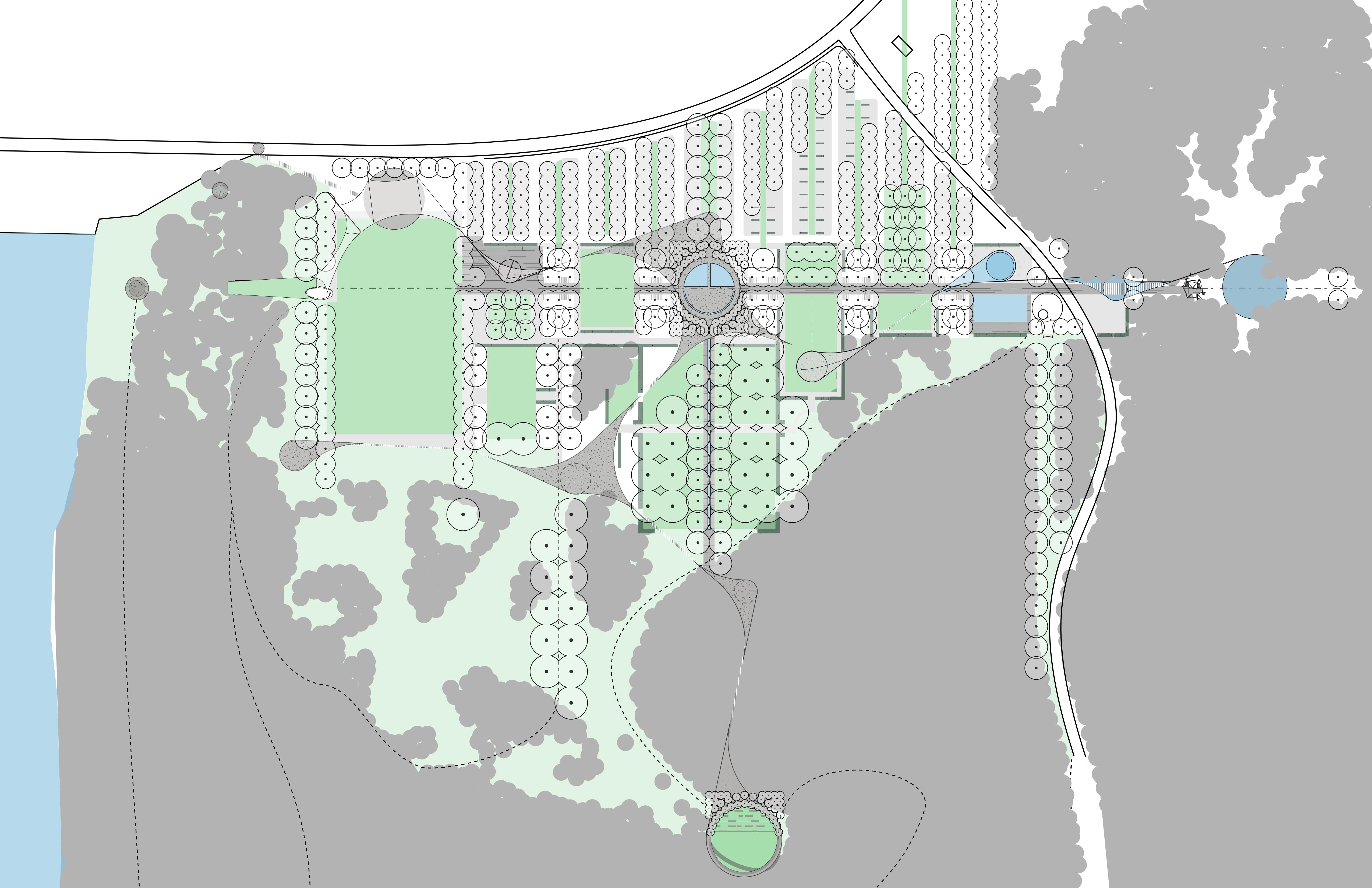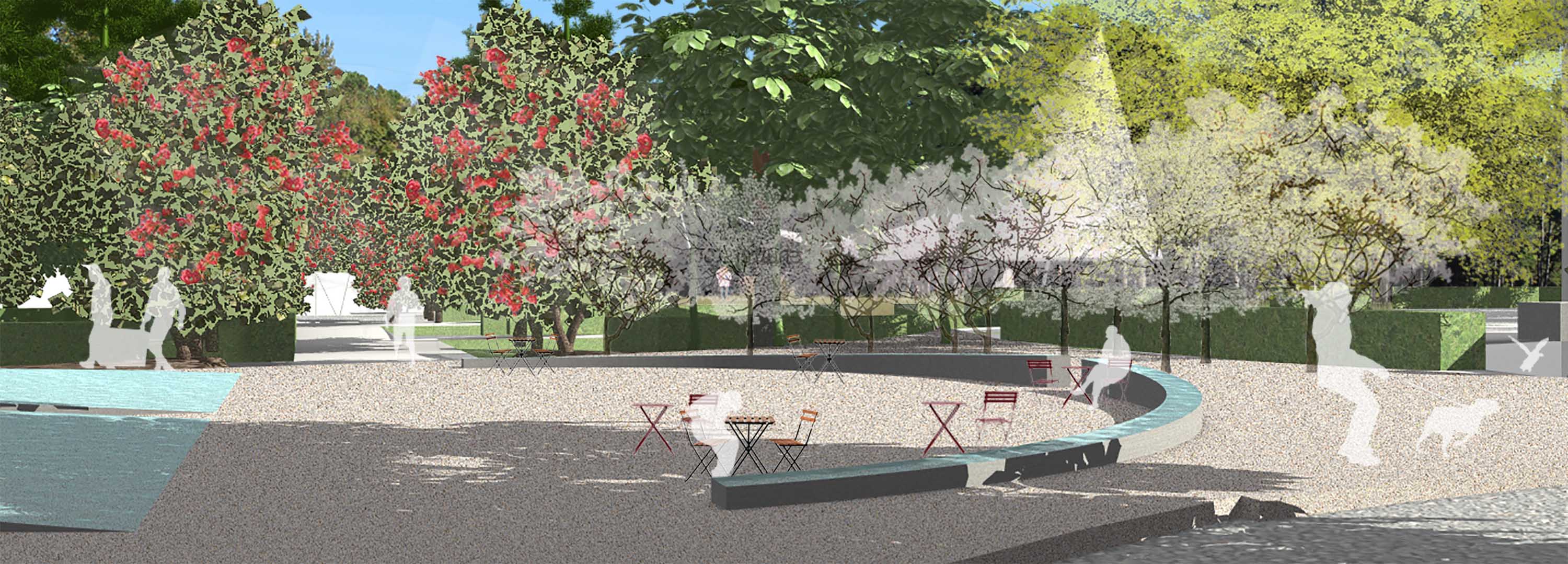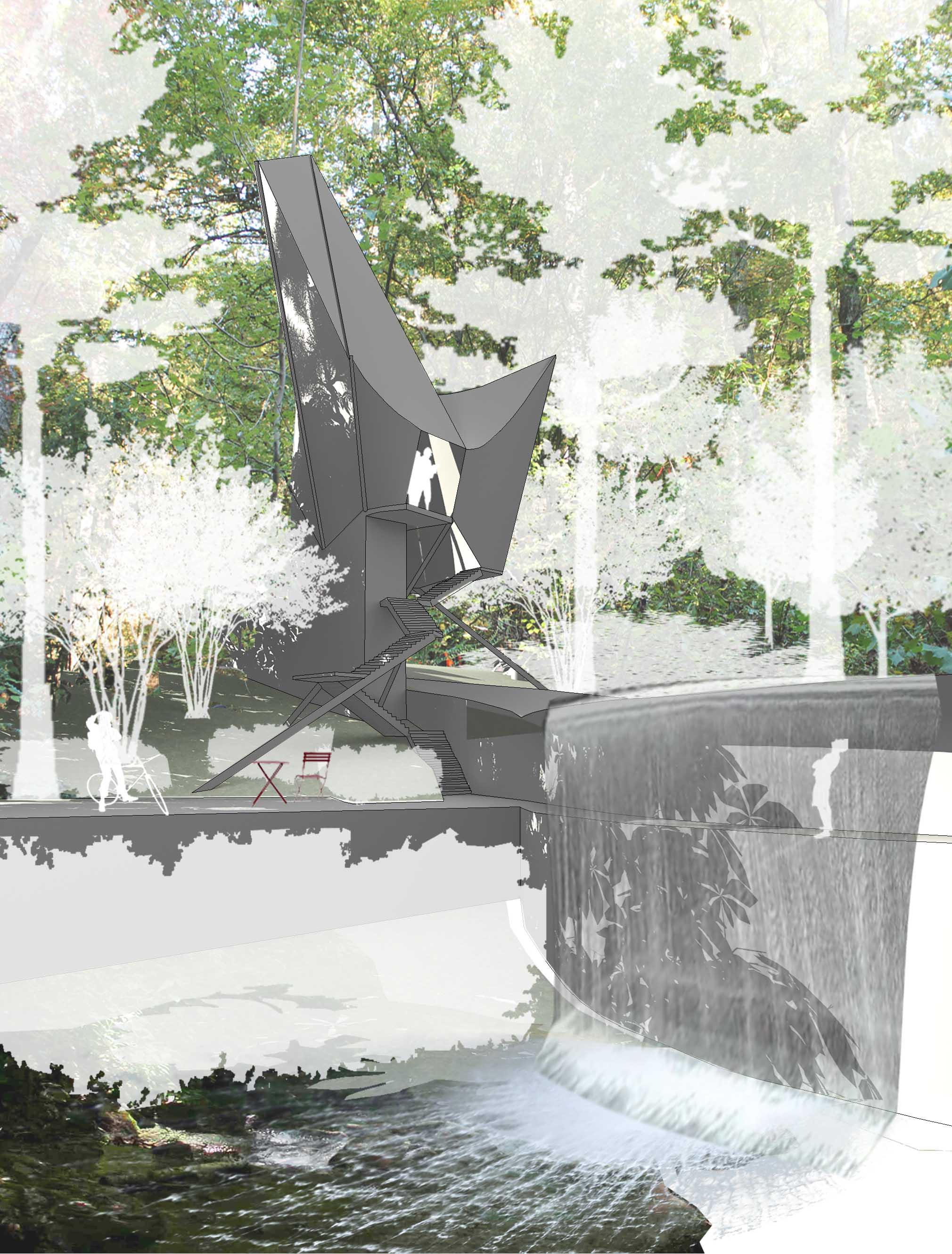Revisiting the Greers Ferry National Garden
Heber Springs, AR, USA 2015

In 1963, Edward Durell Stone designed a grand garden for his home state of Arkansas. Never realized, the design seemed more schematic than a fully realized design. Designed during my time at the UACDC, the area of assignment for this project was the portion of large formal gardens that were proposed leading to an overlook at a fully realized dam dedicated by President John F. Kennedy. At the other end of this axis, a two story bridge connects the two sides of a ravine - the ecosystem of which was ruined by the dam).


In the nature of preservation, Stone’s plan should be completed - at least ideologically. In order to do this, I suggest a manipulation of Stone’s plan though a series of de Stijl moves that help the project lose it’s monotonous quality. At the intersection of a newly proposed axis, Stone’s desire for a large circular fountain should be broken up to become occupiable. At the South point of this axis, a new overlook allows for discovery of the rest of the park (undesigned in this project).


Next to the dam of the little Red River a large concert space is proposed. Branching off of this space would be a bi-level overlook. From it’s lower level the dam (seen without its corresponding lake) would seem mountainous. On the contrary, the upper level of the overlook sees the dam as part of the greater network of the Little Red River.

Secondly, a light, contemporary network of pipes, paving, and tensile “folly” structures has been overlaid. Heated pipes contrast the formal gardens and incline visitors to experience the park differently in the cooler months. These pipes collect at nodes where “follies'' rise up as discoverable artefacts. On the East end of the park is a dramatic drop to the start of the trails throughout the (largely untamed) forest. This moment of descent is celebrated with a tensile tower overlooking a “saucer” of water that pours into the creekbed. In addition, in the changing of the seasons, varying plantings present different spatial geometries in the gardens. Plants used to establish these differing geometries: Loblolly Pine, Gingko, Crepe Myrtle, Apple Blossom, Southern Waxmyrtle.

The research of this project went on to establish the basis for the design of an award winning proposal, carried forward by the UACDC.